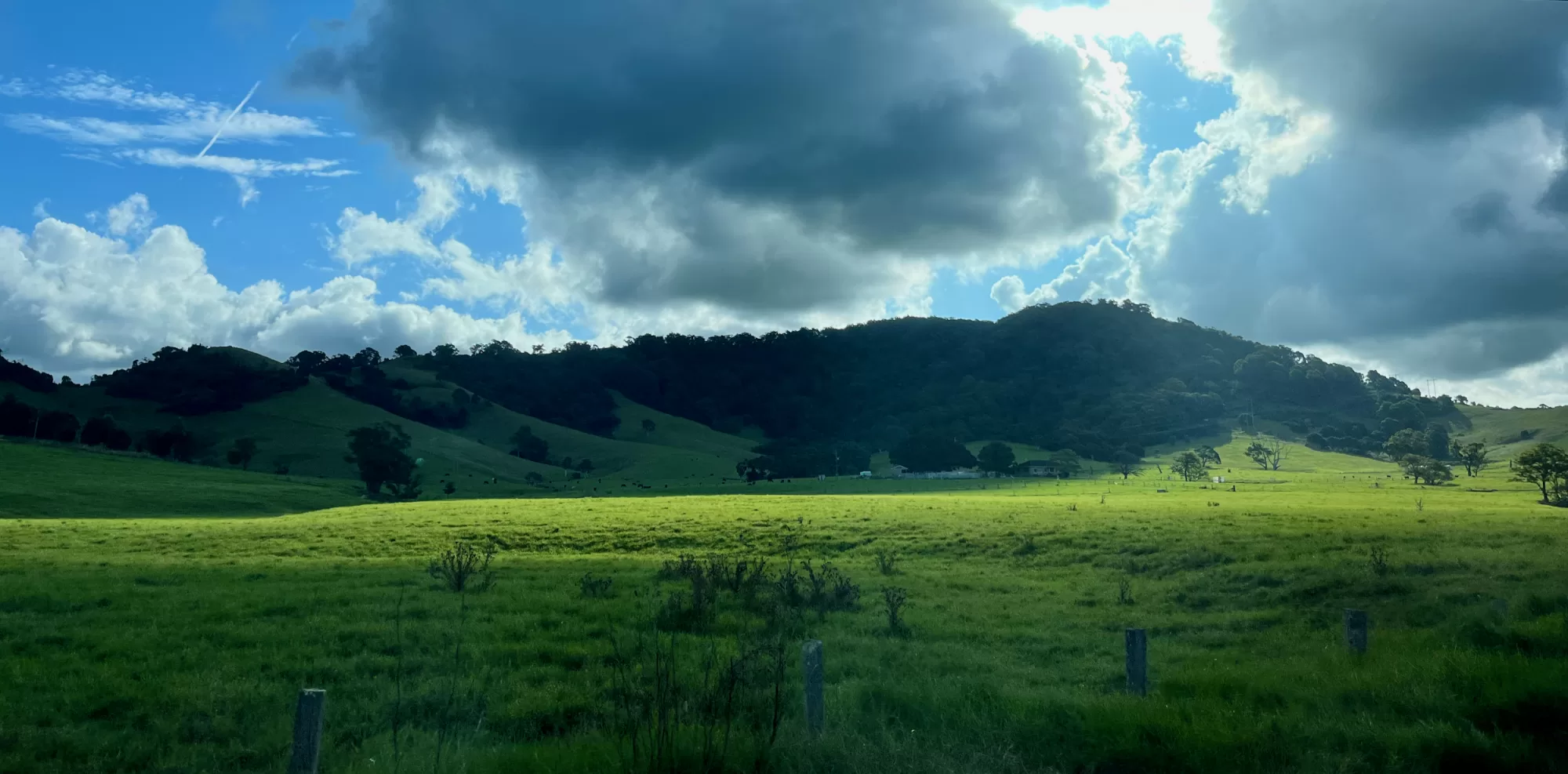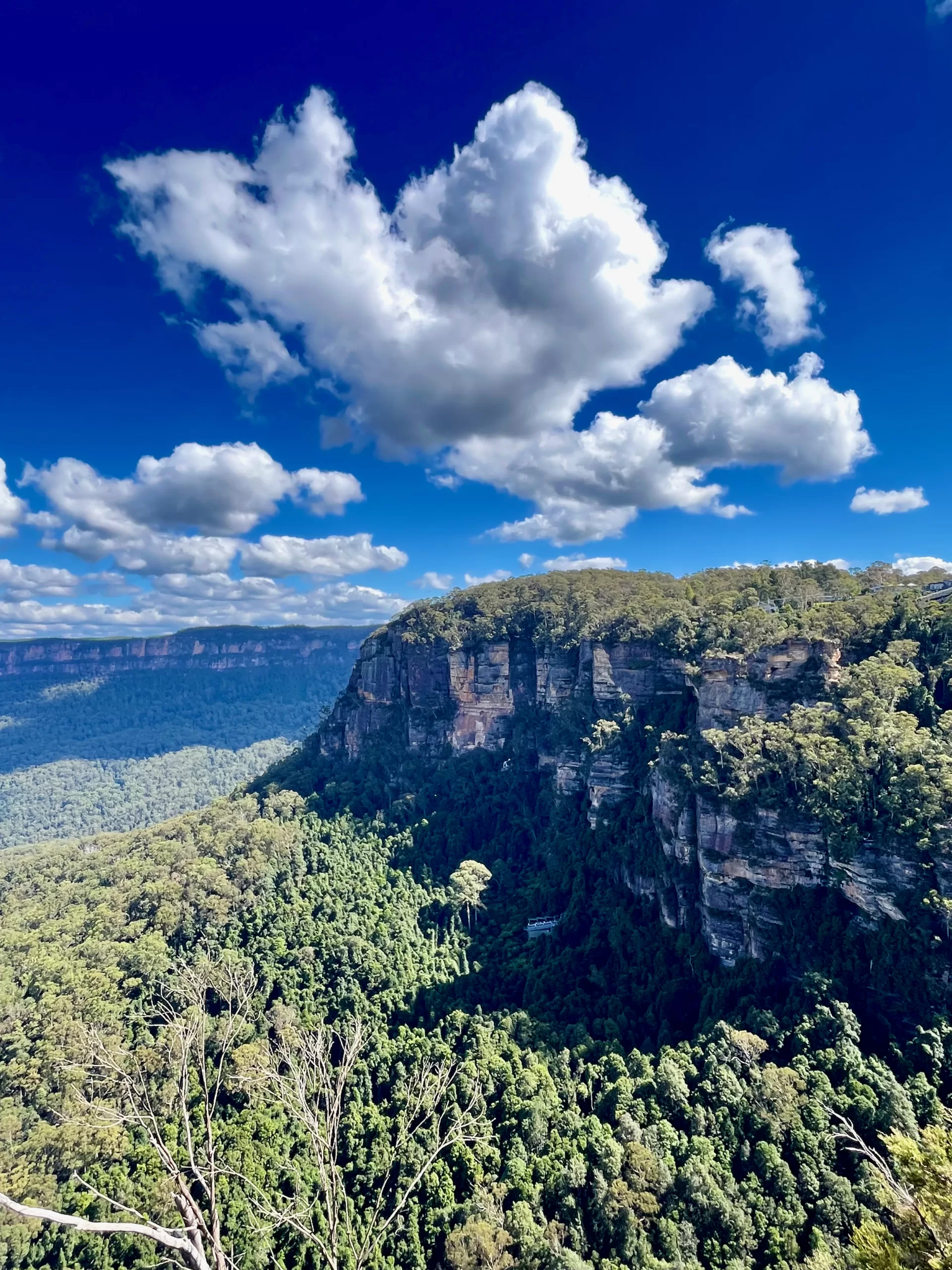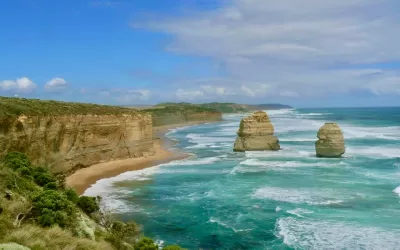Australia, the land of stunning beaches, vast deserts, cool mountainous regions, and lush rainforests, boasts a climate as diverse as its landscapes. Whether you’re planning a year-long caravan adventure along the coast or a road trip across the Outback, knowing what to expect weather-wise is essential. Let’s dive into the key aspects of Australia’s clima, so you can pack smart, travel safely, and make the most of your adventure Down Under.

A Land of Contrasts
Australia’s climate varies dramatically from one region to another, largely due to its massive size. From the tropical north to the temperate south, and everything in between, here’s an overview of the major climate zones:
Tropical North – wet and hot
Where: Northern Queensland, Northern Territory, and northern Western Australia.
Climate: The tropical north experiences two distinct seasons a wet and dry season.
The wet season (November to April) is hot and humid with heavy rainfall and thunderstorms. Expect heavy downpours and the occasional tropical cyclone
Top Tip: While it might sound daunting, the wet season is also when the landscape is lush and vibrant. If you’re visiting during the wet season, be prepared for some muggy days and pack light, breathable clothing, and always have a raincoat and plenty of insect repellent handy.
The dry season (May to October) is warm, sunny, and less humid, making it the perfect time to visit. The weather is warm but not overly humid, with clear blue skies and cooler evenings. Perfect for exploring national parks, waterfalls, and the Great Barrier Reef.
Central Australia: Desert Climate
Venturing into the heart of Australia means dealing with a desert climate. Places like Alice Springs and Uluru are iconic but come with extreme weather conditions.
Where: Central Australia, including the Outback.
Climate: This region sees extreme temperatures.
Summers (December to February) can be scorchingly hot, with temperatures often soaring above 40°C (104°F). If you plan to visit during this time, aim for early morning or late afternoon activities and always carry plenty of water.
Winters (June to August) are cooler, surprisingly, the desert gets quite cold at night, sometimes dipping below freezing. Daytime temperatures are much more comfortable, ranging from 16°C to 24°C (61°F to 75°F). Pack layers so you can adjust to the changing temperatures throughout the day.
Top Tip: For summer travels, pack plenty of water, sunscreen, and a good hat. Winter nights can be surprisingly cold, so bring warm layers for the evenings.

Southern Australia – Temperate Zones
The southern regions, including cities like Sydney, Melbourne, Adelaide, and Perth, experience a more temperate climate. Especially those along the eastern and western shores, enjoy a maritime climate. This means milder temperatures and more consistent weather patterns, thanks to the influence of the ocean. This means you’ll get four distinct seasons.
Where: Coastal areas of New South Wales, Victoria, Tasmania, and parts of South Australia.
Climate: These regions enjoy four distinct seasons. Summers are warm, while winters can be quite chilly, especially in Tasmania and the higher elevations.
Summer (December to February): Warm and sunny, perfect for beach days and outdoor adventures. Temperatures range from 25°C to 35°C (77°F to 95°F), but can occasionally spike higher.
Autumn (March to May): Mild and pleasant, with cooler evenings. It’s a great time for hiking and enjoying the changing colors of the foliage.
Winter (June to August): Cooler and wetter, especially in Melbourne and Sydney. Daytime temperatures are between 10°C and 15°C (50°F to 59°F), with colder nights. Don’t forget your umbrella and a good jacket.
Spring (September to November): One of the best times to visit. The weather is warming up, flowers are blooming, and the days are getting longer.
Top Tip: Always check the local forecast. Coastal regions can experience rapid weather changes, so layering is key.
Subtropical Areas
Where: Southern Queensland and parts of New South Wales.
Climate: The subtropical climate offers hot, humid summers and mild winters. Rainfall is more common in the summer months.
Top Tip: Summers can be quite sticky, so breathable, moisture-wicking clothing is your best friend. Don’t forget the insect repellent—mozzies (mosquitoes) love the humidity!
Mediterranean Climate
Where: Southwestern Australia, including Perth.
Climate: Think hot, dry summers and cool, wet winters. This region is known for its pleasant, sunny weather.
Top Tip: Summer is perfect for beach days, but winter can get quite wet. The best time to visit is during spring and autumn when the weather is perfect for outdoor activities.
Pack accordingly and keep an eye on the weather forecast.
Tasmania: A Cooler Climate
Tasmania, the island state to the south, has a cooler and more temperate climate compared to the mainland. It experiences four distinct seasons and can be quite unpredictable.
Summer (December to February): Warm and sunny, ideal for exploring the stunning landscapes. Temperatures range from 17°C to 23°C (63°F to 73°F).
Winter (June to August): Cold and often wet, with temperatures ranging from 3°C to 11°C (37°F to 52°F). Some areas even get snowfall, making it a unique experience for visitors.

Seasonal Highlights
Summer (December to February)
Summer is beach season! Coastal areas are bustling with activities, and the ocean is perfect for swimming, surfing, and snorkeling. However, be prepared for the heat in the interior regions and plan outdoor activities for the cooler parts of the day.
Autumn (March to May)
Autumn offers milder temperatures and fewer tourists, making it a great time to explore popular spots. The changing foliage in places like Victoria’s High Country and Tasmania adds a beautiful touch to your travels.
Winter (June to August)
Winter in Australia means snow in the southern regions! Ski resorts in Victoria and New South Wales come alive, while the northern parts remain pleasantly warm. It’s an ideal time to visit the tropical north and the Red Centre without the intense heat.
Spring (September to November)
Spring sees the country in bloom, with wildflowers carpeting the landscapes. It’s a fantastic time for hiking and exploring national parks. Temperatures are generally mild, making it a comfortable season for travel across most regions.

Following the Sun: The Best Way to Do the Lap Around Australia
Following the Sun
If you’re planning to do the iconic “Big Lap” around Australia in a caravan, timing is everything. To follow the sun and stay in warmer climates:
Winter (June to August): Stick to the northern parts of Australia—Queensland, the Northern Territory, and northern Western Australia. This is the dry season up north, perfect for exploring without the intense heat or humidity.
Spring and Autumn (September to November, March to May): Ideal for visiting central Australia and the southern coastlines, like the Great Ocean Road, Adelaide, and Sydney. The weather is generally mild and pleasant.
Summer (December to February): Head south to avoid the extreme heat of the interior and the tropical north. Tasmania, Victoria, and southern Western Australia are great spots for cooler, more comfortable weather.
Clockwise or Counter-Clockwise?
Either direction works, but many suggest starting south if you’re departing in the cooler months. This way, you avoid the north’s wet season and hit the southern beaches during summer. If you start in the north during winter, you’ll enjoy the dry season’s mild temperatures and clear skies, perfect for exploring Queensland’s beaches, the Northern Territory’s Outback, and northern Western Australia’s wild coastlines.
Key Stops
Queensland: From the stunning beaches of the Gold Coast and Sunshine Coast to the Great Barrier Reef and Daintree Rainforest, Queensland is a tropical paradise.
Northern Territory: Discover the Red Centre with Uluru, Alice Springs, and Kings Canyon, and don’t miss Kakadu and Litchfield National Parks for waterfalls and wildlife.
Western Australia: Explore the Coral Coast, Ningaloo Reef, and the Pinnacles Desert. Head south to Margaret River for world-class wineries and stunning coastal scenery.
Southern Cities: Adelaide, Melbourne, and Sydney are cultural hubs with vibrant food scenes, iconic landmarks, and beautiful beaches. Don’t miss the Great Ocean Road in Victoria and the wine regions around Adelaide.

Wind, Rainfall, Tides, and Swell
Australia’s varied climate also means you’ll need to be mindful of wind, rainfall, tides, and swell, depending on your activities.
Wind and Rainfall
Wind: Coastal areas can be quite windy, especially in the southern regions. The Fremantle Doctor in Perth, a cooling sea breeze, is famous in summer. In the north, watch for cyclones during the wet season.
Rainfall: Rainfall varies widely. The tropical north sees most of its rain from November to April, while the south has a more even distribution, with winter being wetter. Keep in mind that rainfall plays a big role while visiting some of your top spots and you might be quite disappointed to hike to a waterfall for an hour and a half just to find out there is no water, or make a detour just to snap some insanely amazing shots of a pink lake and find out it is not pink (as we did!), so always ask around or in visitor information center because for example, the pink lakes, are best visited after heavy rainfall when they turn their most vibrant pink, the same goes for waterfalls—many are at their best just after the wet season. Always check the forecast when planning outdoor activities. Very important is also to be aware of the current flood situation. For more information check.
Tides and Swell
Tides: Tides are crucial for activities like beach driving (for instance on Fraser Island or Rainbow Beach) and visiting rock pools. There are two high and two low tides every 24 hours, meaning that in 6 hours the tide changes from low to high and vice versa, unless there is a diurnal tide that usually has 1 high and 1 low tide per day only, as for instance in Karumba.
Swell: If you’re into surfing, pay attention to the swell, which is different from waves. Waves are caused by the local wind, whereas swell is caused by distant wind and can travel huge distances. Areas on the east and west coasts have different peak seasons for waves. The Gold Coast is famous for its surf, typically from March to May, with the best conditions.
Planning Your Activities
Rock Pools: Check the tides before visiting rock pools. Low tide reveals these natural beauties, perfect for a refreshing dip.
Waterfalls and Pink lakes: Best seen in the wet season up north (November to April) or after heavy rain in the south.
Beach Driving: Always go at low tide to avoid getting bogged in the sand. Fraser Island is a popular spot where this is essential.
Surfing: Ideal conditions depend on swell and tide. The east coast is generally better in autumn, while the west coast shines in summer.
Swimming: For safe swimming, especially in the north, stick to the dry season to avoid stingers and rough seas. The southern beaches are generally safer year-round but can be chilly in winter.

Temperature of the Sea Per Season Per Region
Understanding the sea temperatures can enhance your swimming, snorkeling, and diving experiences.
Northern Australia
Summer (December to February): Sea temperatures range from 28°C to 31°C (82°F to 88°F), perfect for swimming but watch out for stingers.
Winter (June to August): Cooler but still pleasant at 24°C to 27°C (75°F to 81°F).
Southern Australia
Summer (December to February): Coastal waters are refreshing at 18°C to 22°C (64°F to 72°F), ideal for beachgoers.
Winter (June to August): Sea temperatures drop to 12°C to 15°C (54°F to 59°F), so wetsuits are recommended.
Western Australia
Summer (December to February): Warmer waters at 22°C to 26°C (72°F to 79°F), great for swimming and surfing.
Winter (June to August): Cooler at 18°C to 20°C (64°F to 68°F), but still enjoyable.
Tasmania
Summer (December to February): Cooler seas at 16°C to 18°C (61°F to 64°F), refreshing for a quick dip.
Winter (June to August): Chilly at 12°C to 14°C (54°F to 57°F), often requiring a wetsuit.

Preparing for Your Trip
Check the Weather: Always check the weather forecast for your destination before you leave. We are using The BOM weather app. Weather can vary significantly even within short distances. Floods, bushfires, and rain can change your plans so for more information check
Pack Smart: Pack according to the regions you’ll be visiting. Layering is essential. Light, breathable fabrics for the heat and tropical north, layers for the central desert, warmer layers for cooler evenings and mornings, and a mix of everything for the temperate south and Tasmania.
Stay Hydrated: Australia’s heat can be intense, especially in the interior and northern regions. Always carry plenty of water.
Sun Protection: The Australian sun is strong. Use high-SPF sunscreen, wear hats, and sunglasses, and cover up wherever possible. If you’re heading to the outback, a good hat, sturdy shoes, and plenty of water are crucial.
Plan for Rain: Especially in the tropical north, always have a raincoat or umbrella handy during the wet season.
Insect Repellent: Mosquitoes and other insects can be a nuisance, especially in humid areas, and essential for the tropics. Pack repellent to keep them at bay.
Emergency Supplies: In remote areas, ensure you have a first-aid kit, extra food and water, and a means of communication.

Wrap Up
Traveling around Australia is a fantastic adventure, and understanding the climate helps you make the most of it. With the right planning, you can chase the sun, enjoy the best of each season, and dive into the diverse beauty that Australia offers. So, pack your sunnies, check the weather, and get ready to hit the road. Safe travels and happy exploring, mates!
Take a look at our Australia Travel Guide page for all the inspiration and information you need to kickstart your travels and hit the road more frequently!






0 Comments